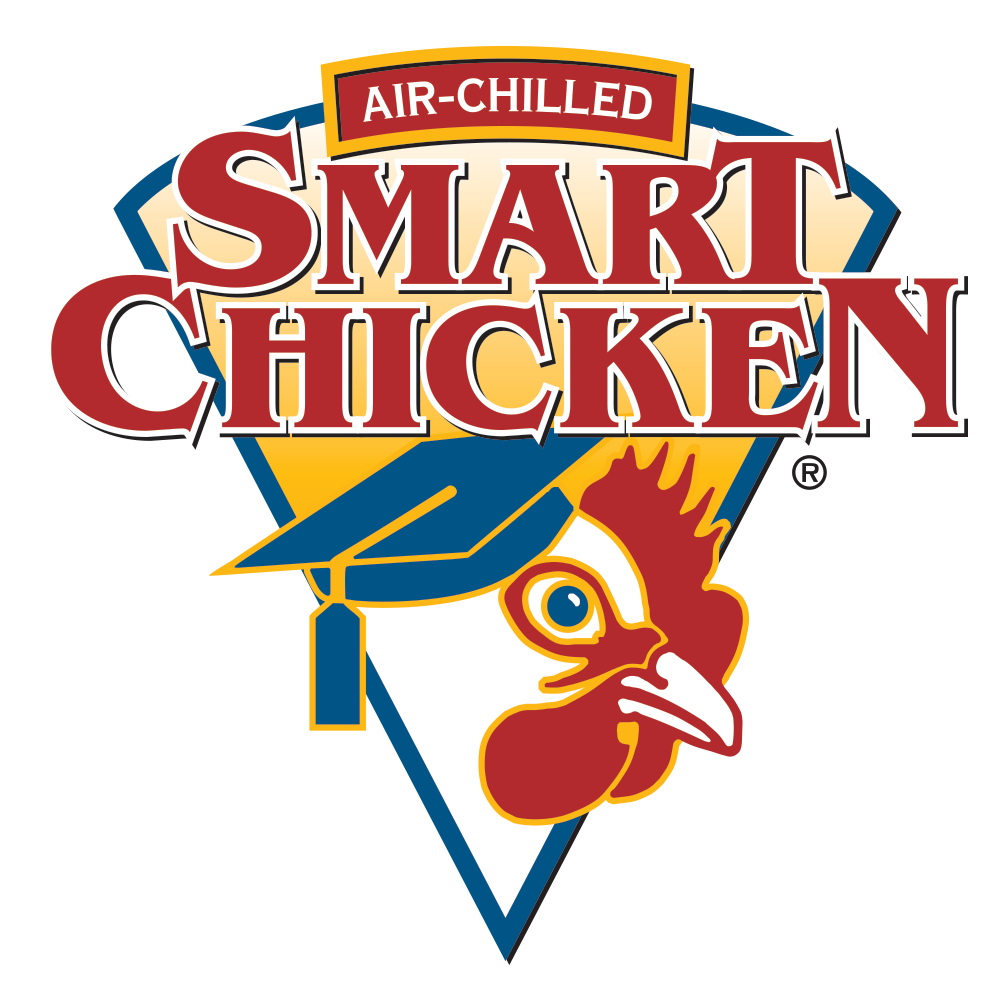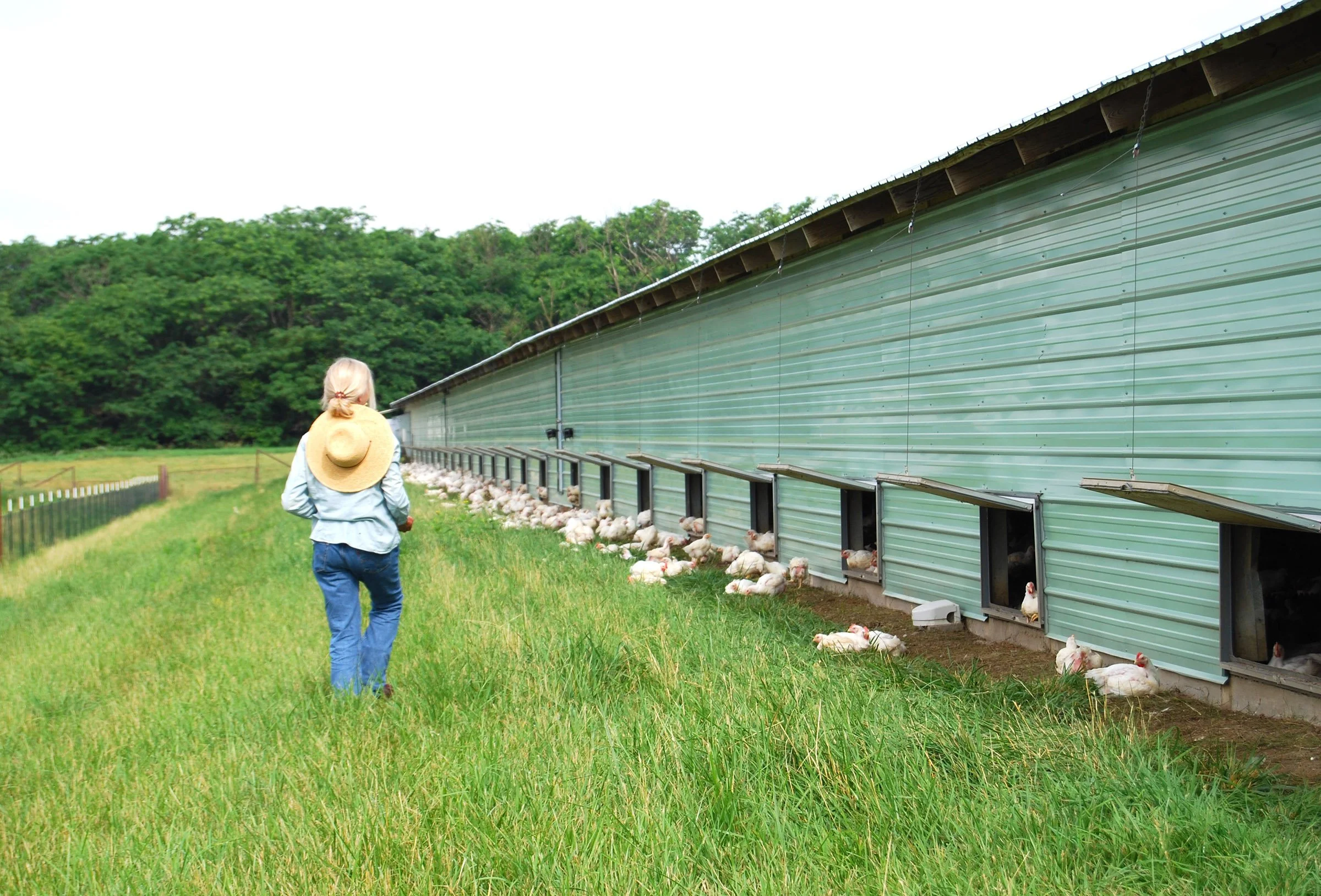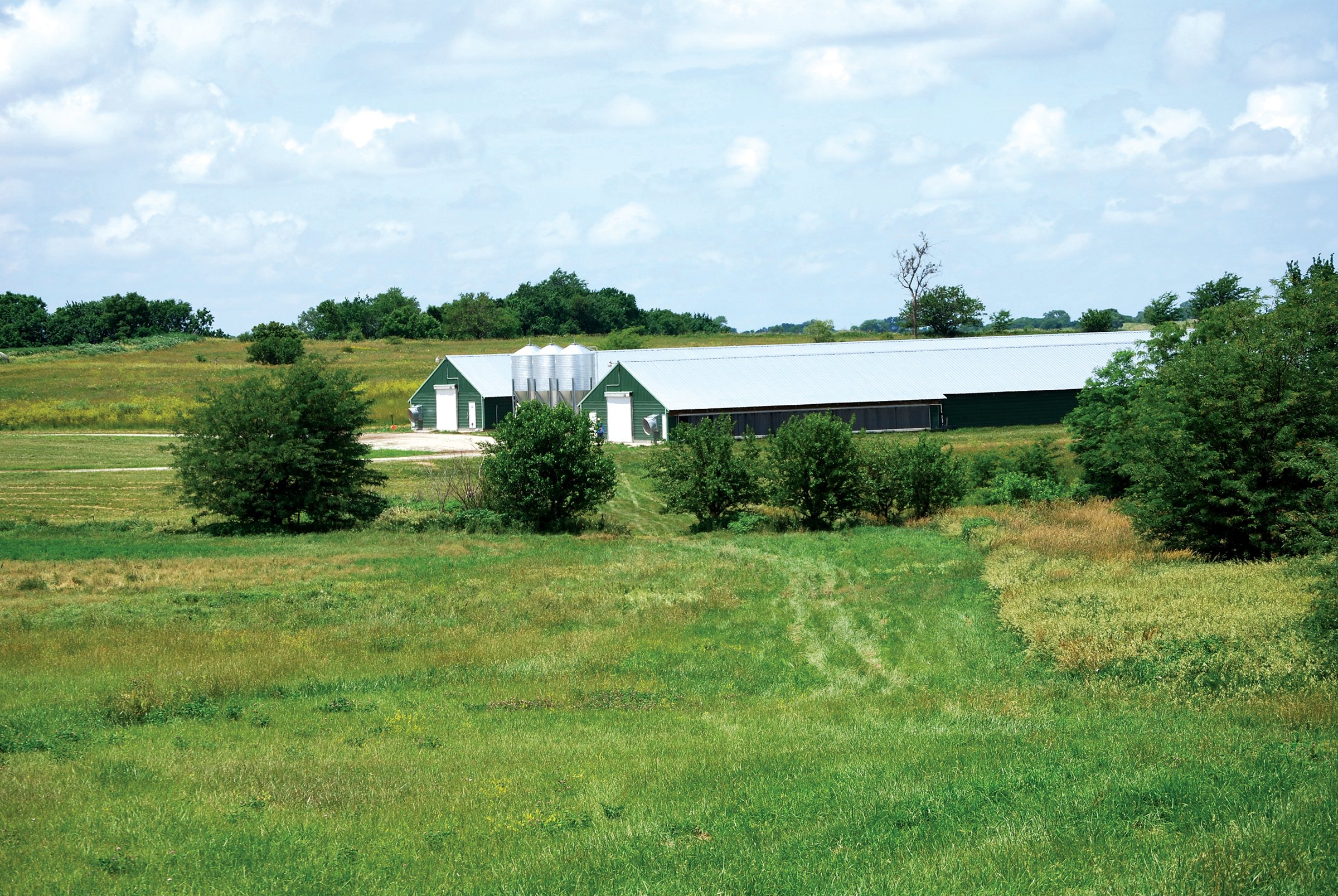Tecumseh Poultry was founded in 1998, based on a simple goal to produce the best fresh chicken in the United States. We set out to study every step involved in raising and processing chickens so as to define and then implement methods which we determined would result in the highest quality finished products. In other words, to do things the right way. Not necessarily the easiest, fastest or most efficient way. Simply the right way.
We believed—and we still believe—that the right way includes the proper treatment and care of our chickens and also our people, and the utmost care and discretion in how we process and package our product. Further, we believed that we could do so while keeping a careful eye on the environment and on the sustainability and renewability of the resources we would need to access. We knew we would have to be able to do things efficiently, but we also believed that consumers would be willing to pay a little more for a superior product produced with these principles in mind. We have restored taste to store-bought chicken in this country, and we take great pride in that accomplishment.
We’ve also learned a great many things along the way, including the fact that the job is never done. There are always improvements and enhancements to be made, and our quest to be the best and to continue to raise the bar will never end.
This summary describes many of the things we do differently than the industry and explains why we do them that way. We have been pleased to see that several producers have subsequently tried to emulate many of our principles and processes, and we welcome those developments. We appreciate the challenge to stay ahead of the pack—a challenge that drives us to get better and better; it does not, and never will, tempt us to cut corners or settle for anything less than the best.
Location
Our first issue was where to locate our operations. The easiest choices were to go where everyone else was: the broiler belt in the Deep South, the eastern shore, and the West Coast. After all, the industry labor and influence were well established in those areas. Instead, we took a much broader view, opting to locate where the natural resources necessary to operate to our standards were most readily available, and available in a manner with the least potential adverse impact on the environment. Environmental concern with issues such as local production and reducing one’s carbon footprint hadn’t really taken hold in 1998, but even then we believed in operating in the most sustainable way possible and with a keen eye to preserving natural resources.
We determined that the best location was in an area where no other poultry company had chosen to operate—in the heart of the Midwest. Why? The vast majority of feed grains produced in this country are produced in the Midwest, and corn and soybeans are the dominant feed sources for chickens. Since every pound of chicken in a package takes between two and three pounds of corn and soybeans to produce, the math is simple: It takes far fewer non-renewable resources to transport packaged chicken than it does grain. Our chickens are raised in barns and processed in facilities that were literally built in corn and soybean fields. If you are concerned about the issue of carbon footprint, ask the producer of the chicken you buy where the grain on which they were raised came from. Transporting packaged chicken has a significantly lesser adverse impact on the environment than transporting grain. Being located at the geographical center of the country, and literally on top of its primary distribution corridor, Interstate 80, also allows us to serve markets in a variety of locations with the least possible aggregate travel.
The second major location criterion was water resources. Not just the water necessary to produce chicken, but also the effect of that production on other water resources in the area. Like any agricultural operation, production of chickens requires a substantial amount of water, not only for drinking, but also for production of the feed grains necessary to raise the chickens and also in the processing operation itself. The Midwestern states are located on the greatest natural underground aquifer in the world, and Nebraska is atop the heart of it. No water resource is unlimited, but the Ogallala aquifer is massive, and the state of Nebraska has been cautious and proactive in protecting its greatest resource.
Care and Husbandry
With location settled, the next issue to consider was how the chickens would be raised, fed, and handled. We firmly believe that the quality of our end product—the taste—is affected by every aspect of how the chickens are raised, fed, and handled, starting in the egg. Beginning in 1998, we started building state-of-the-art tunnel ventilation buildings in which to raise our chickens. In addition to allowing natural ventilation and sunlight, these buildings have both heating and air conditioning (through a process involving the continuous re-use of chilled water) for extreme summer and winter conditions. The buildings are continuously ventilated, naturally or with large fans, to ensure continuous fresh air. There are no cages or other enclosures. The chickens are free to roam, and have readily available feed and water at all times. The bedding is a natural litter, continuously reconditioned and maintained so that it remains dry and clean.
We were one of the first broiler companies in recent decades to go to an all-vegetable diet, meaning that we use no animal by-products or other fat or energy enhancers in our feed. We were also one of the first broiler companies, and remain one of the few, to entirely eliminate the use of antibiotics in raising our chickens. We never use any antibiotics when raising Smart Chicken, whether by injection or in our feed or water. We have antibiotics available in the event of sickness, but chickens treated with antibiotics are never sold as Smart Chicken. The issue rarely arises, though, because we have found that the need for antibiotics can be virtually eliminated with the appropriate care and handling of the chickens and the facilities.
In 2003, we began converting our production to USDA Certified Organic, a process that continues today. Our USDA certified organic chickens meet all of the criteria under the USDA’s National Organic Program, and are certified as compliant with the program by the IDALS (Iowa Department of Agriculture and Land Stewardship). The National Organic Program incorporates many of the standards we were already following, such as the elimination of the use of animal by-product feeds, antibiotics, and hormones, but also adds additional stipulations, including the requirement that all feed grains also be certified organic, meaning that the grains are non-GMO and raised without pesticides, herbicides, or synthetic fertilizers. Certified organic chickens must also meet strict standards for raising and handling, including access to outside pastures. Our certified organic chickens, in addition to having access to state-of-the-art heated and air conditioned facilities, are also free range, with access to well-maintained grass pastures. The USDA and IDALS regularly audit and verify compliance with these standards.
A couple of years after we introduced our organic chicken, we also sought and achieved certification of humane care and handling of our chickens through the HFAC (Humane Farm Animal Care) association. HFAC takes the National Organic Program standards a step farther, adding rigorous limitations on stocking density, handling, and access to feed and water, among other requirements. We are proud to be the first chicken producer in the country to maintain both certified organic and certified humane status.
We also have refused to shift to automated catching of our chickens. All of our chickens are caught by hand by trained catch crews, both to eliminate stress and injury to the birds and to increase quality.
Processing
In 2005, we became the first chicken producer in this country to introduce Controlled Atmosphere Stunning into our production. The standard in the U.S. poultry industry is to stun chickens by electric shock. In addition to animal welfare benefits, we believe Controlled Atmosphere Stunning produces a superior product by preserving the natural tenderness in a relaxed muscle.
With our CAS (Controlled Atmosphere Stunning) system, the chickens are conveyed through multi-chambered, state-of-the-art equipment where they receive increasing levels of CO2, literally putting them slowly to sleep. They don’t flap, fight, or gasp, and they are not handled or shackled until they are entirely unconscious. The room is bright, clean and comfortable for our employees, and the effect on the end-product is remarkable: The birds are not stressed, bruising and breakage are minimized, bleed-out is maximized, and the muscle structure retains its natural tenderness. Yes, the CAS process is more expensive and less efficient than conventional stunning, but it is more humane for both the chickens and for our employees, and it produces a far superior product.
After chickens are sacrificed, they are scalded for feather removal. The commercial industry standard is to scald at over 150°F. These temperatures facilitate quick and efficient feather removal; they also literally start to cook the chicken, again having a material adverse effect on tenderness. Temperatures of 150°F start to emulsify the skin, which is why most of the packaged chicken you see has very little color. We scald at as much as 25°F below the industry standard. While this slows our process and necessitates greater care in feather removal, the end-product reflects the additional care.
Our focus on taste and concern for water resources led us to our first major processing innovation, in 1998, involving the way chickens are chilled after slaughter and evisceration. We found that every chicken processor in this country utilized a water immersion method of chilling, whereby post-evisceration the chicken carcasses are chilled in a communal trough or tub of chlorinated water, where they spend a couple of hours until their internal temperature is reduced to under 40°F. Air chilling eliminates any absorption of water, once again preserving the natural tenderness of the meat.
We introduced to this country a chilling technology that was in common use in Europe: air chill. With air chill technology, the carcasses are chilled using cold air rather than cold water. Tecumseh Poultry’s system is a pure air chill system: Absolutely no water is utilized in the chill chamber. The chickens enter and exit the chamber on individual shackles and circulate through the chamber until they have reached the requisite temperature. Not only do they not absorb any chlorinated water, but they never touch each other in the chilling process, thus eliminating the opportunity for cross-contamination. The lack of introduction of an artificial ingredient—communal chlorinated water—makes a remarkable difference in the muscle and microbiological integrity of the meat. Natural juices are preserved, not diluted, and the meat is better able to absorb any seasonings or other ingredients during the cooking process, unlike immersion-chilled chicken. We found that the air chill technology made a remarkable difference in the tenderness of the meat. We commissioned a university study to verify our findings, and their test results exceeded even what we had anticipated.
When we introduced air chill technology and focused on a study of tenderness, we deviated in another important way from the processing methods generally used in this country: As a general rule, chickens processed in commercial plants are killed, processed, and packaged in one day. Most people are aware of the effect on tenderness of aging beef. The chill temperature equilibrates through the meat, the muscles relax, and the muscle tension and rigor dissipates. We age our carcasses for a day before we process and package them. We found once again—and verified with a university study—a remarkable improvement in tenderness as a result.
Our unique combination of technology and people is perhaps most evident in how we grade and sort our products. We have developed a vision grading system, so that every part of every carcass that fails to meet certain criteria—skin coverage, bone breakage, or bruising, for example—is automatically sorted, and those parts never become Smart Chicken. We also take it a step further, and have quality assurance staff that visually inspect every piece and every tray, and sort pieces that do not meet our finished product standards. We believe the resulting loss of efficiency and yield is worthwhile, because it allows us to put a consistent, higher-quality product in every tray, every time.
Our technology also allows us to carefully track every flock we process. Doing so eliminates the opportunity for misdating and other mishandling, as well as commingling of different flocks. If you were to call us with the printed numerical code that appears on every package of Smart Chicken, we could tell you not only the date that tray or product was produced, but also the barn in which the chicken was raised, the day the chick hatched, and every other step of the process, all the way into the distribution channel.
Continuous Commitment
Beginning in 1998, we made a conscious decision to deviate from the industry standard in one other material respect: maintaining a close and direct presence with our product all the way until it reaches the store. We have a direct employee representative in every market we serve, and as our employees, these representatives do not sell or promote any product other than Smart Chicken. We have more (in fact many more) direct employee representatives than companies that produce the number of chickens in a day or two that we produce in a year. We regularly visit every store that sells Smart Chicken, and directly engage as many consumers as we can. We want to see issues, concerns, and trends—and also opportunities—before they do, and we believe that a direct, consistent presence is the only way we can be assured of doing so.





